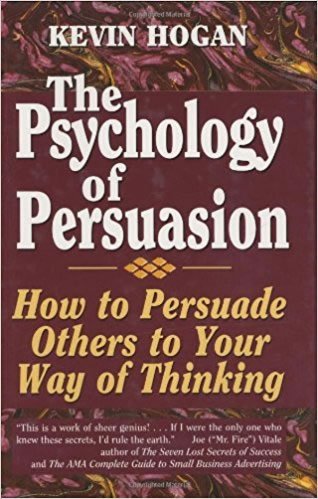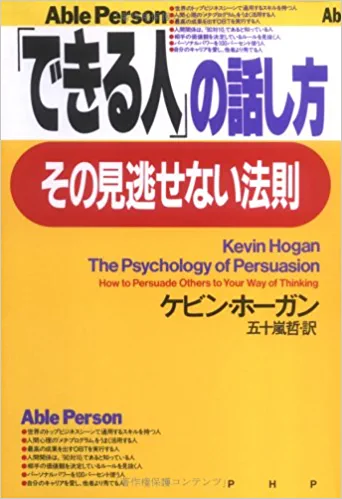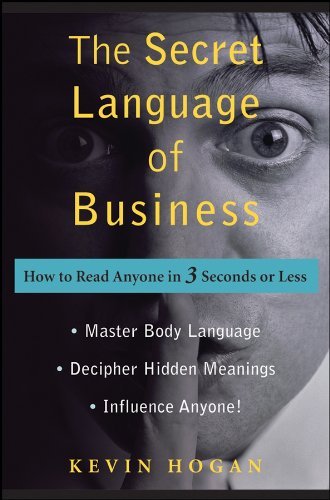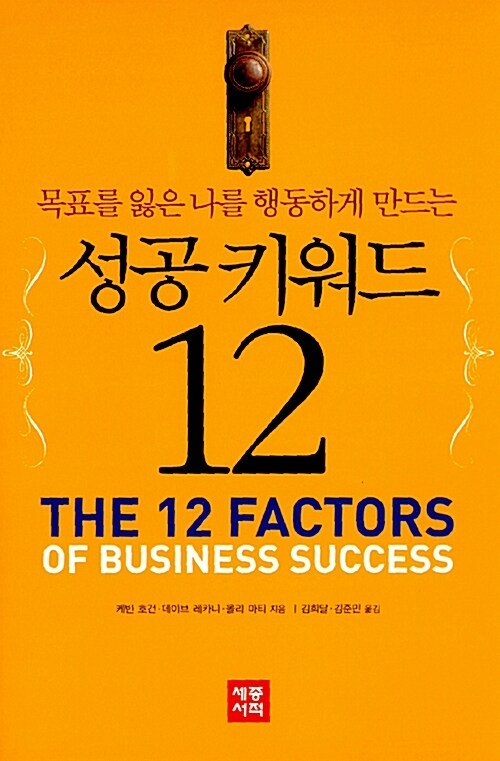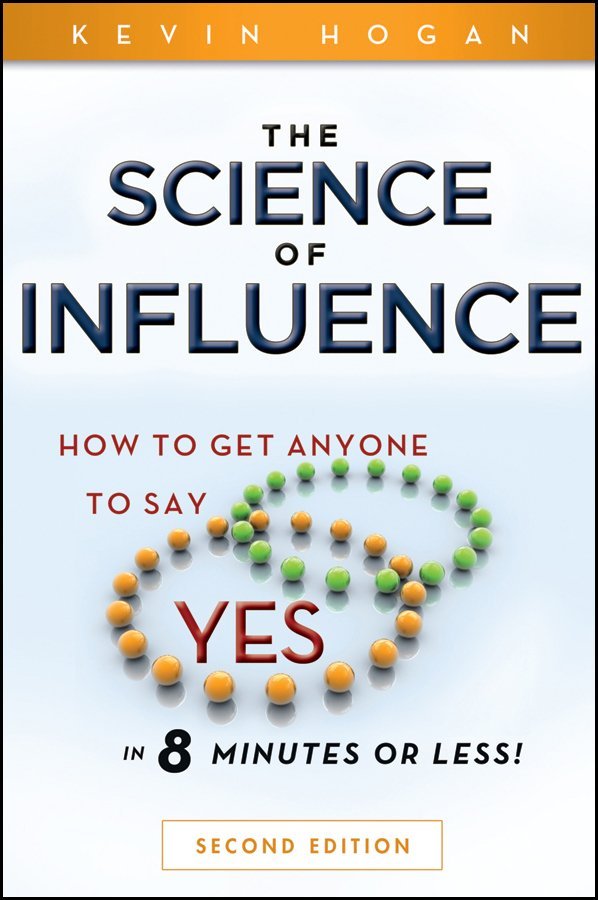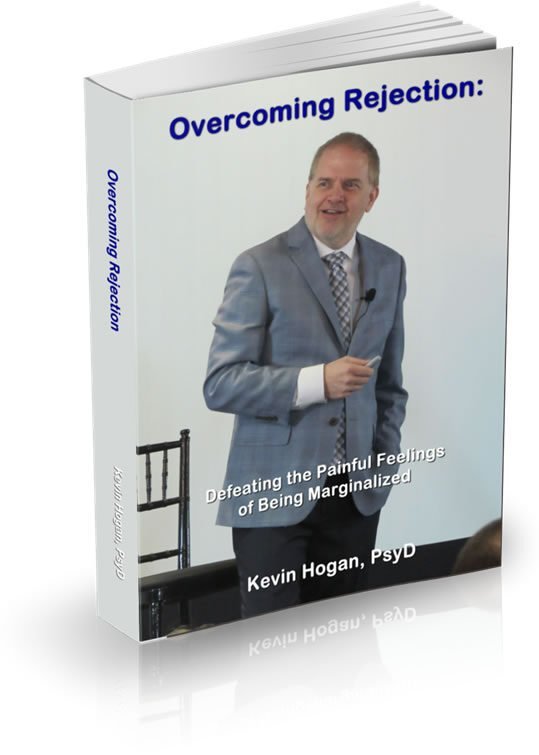
The Conservative vs. Liberal Metaprogram: The Final Answer to the biggest influence button for the rest of the decade.
Today you find out about The Conservative vs. Liberal Metaprogram!
This is the most critical metaprogram on planet earth in 2024, bar NONE.
I “found” the new metapograms quite awhile back after indepth study of the values, attitudes and lifestyles of consumers.
Why Politicians Lose What They Thought They’d Win and How “Funnels” Sell Half of What They Could
Conservatives vs. Liberals: The Gap Widens and Now Influences All Decisions
Polar opposites require different techniques and approaches for decision making for themselves as well as different techniques and approaches for influencing conservatives vs. liberals.
All around the world, there are more polar positions on everything from pro-choice vs. pro-life, spending or saving, how productive people are or aren’t, and how people want to experience their future.
And we begin with the differences between Conservatives and Liberals. (Most countries don’t have Republicans and Democrats). The four terms are not identical, but close enough for our purposes.
What IS the difference between Conservatives and Liberals?
Conservatives perceive the world vertically, like a ladder.
Liberals perceive the world horizontally like a rack of shirts, a shelf of perfume an art gallery where you walk all around the see everything.
The social hierarchy expands up and down as far as status, power, and wealth distribution.
A few people have it, and most don’t. It also expands from left to right as far as differences that are not simply measured. Conservatives tend to be influenced and think by vertical messaging where Liberals are influenced and think horizontally.
In fact, studies show that there are significant differences in how Conservatives shop, what kinds of entertainment they like, whether they make donations and to whom, and whether or not they seek variety.
In most of the English-speaking world, these differences are observable and predict human behavior.
For example, one metaphor is that Conservatives reportedly drink Coke and shop at Hallmark stores, whereas liberals drink Pepsi and shop at Trader Joe’s. Coke is #1, always has been, and always will be. Pepsi tastes better. Always has, always will. Hard to put a measurement on taste. Easy to understand when you have a Pepsi. Coke is for conservatives. Pepsi is for Liberals.
Conservatives endorse the dominance-based hierarchical structure because they believe that it legitimately reflects individual differences in effort and ability (such as winners deserve their dominant positions because they work harder than others). Conservatives structure things vertically. For example, I make more money than you, you make more money than Bill.
Or they might say, “Well he’s the President and Bill is the Vice President and Jack is the janitor.” Jack is at the bottom of the totem pole (the top of the mop to be precise).
Vertical differentiation is largely objective and based on fact.
Conservatives tend to say yes to proposals and buy things that signal their power, dominance, status, or means.
Conservatives think more often in terms of “better than” or “superior to.”
If you want to persuade or sell Conservatives, you use their language and thinking process in your communication. Liberals and Conservatives speak different languages. They don’t connect because they look at the world through different lenses.
Meanwhile, Liberals are more inclined to believe that there is a hierarchical structure in society but that it is not “legitimate” because some people are more likely to be lucky or well-connected than others.
Perhaps most interesting is that liberals believe that most people work hard.
Try telling a Conservative that most people work hard….
Liberals tend to live and see a horizontal hierarchy of things. It’s a chocolate cake vs. a vanilla cake. It’s a Ford vs. a Chevy automobile. Their phone is yellow vs. another person’s phone is blue. One is not better than another. They are signals of identification that make one unique or different but still part of a larger, mostly equal, group.
Liberals believe that the social hierarchy is unfair, and illegitimate and that things like wealth should be redistributed in a way that levels the playing field of life.
When Liberals buy something or say yes to a proposal, it is in part because it will allow them to signal their uniqueness to the world, qualitatively, but not in an easy-to-understand measurable fashion.
Conservative and Liberal ideologies are each, literally, a way of thinking and being.
Liberals don’t need to keep score in the baseball game. They want to enjoy the experience. Conservatives ponder, “What is the point of playing if you don’t keep score.”
Liberals don’t want people to “fail” any classes. Instead, they want people to learn without being put in a vertical structure of “grades.”
Liberals want everyone to make the same amount of money or at least be given money to pay for various expenses. Conservatives need to hear whether people work hard and earn their money, or not.
The results of those values, beliefs, and attitudes map over to most political views and decisions in life, including the things people buy and the experiences they participate in.
People’s Conservative or Liberal thinking creates very different thinking about most subjects. Fernandes and Ordabayev are two researchers who have given us new information for communicating targeted messages.
As an example, to cause a Liberal to think vertically (like the Conservative) you would have to prompt them to consider a preference vertically. “Which phone has the most storage space?” “Which fund has the best return over 10 years.”
All of this is critical to understand because people buy things that, once possessed, will differentiate them vertically or horizontally. Conservatives buy to differentiate themselves vertically and Liberals buy stuff to differentiate themselves horizontally.
The Political Frame is a core driver of human behavior. It shapes how people behave and how they live.
[Better or Different? How Political Ideology Shapes Preferences for Differentiation in the Social, Nailya Ordabayev, Daniel Fernandes, 2018, JCR]
Credit Suisse reported that in 2019 the wealthiest 1% in the world owned 44% of the world’s wealth. The next 10% owned 39% of the world’s wealth. This next 10% has individual wealth between 100,000 and 1,000,000.
If you believe that is fair or reasonable, you are almost certainly a Conservative. You believe that 11% is where you will be if you aren’t already and that’s because you will work hard to get there or stay there.
Meanwhile, if you believe that 11% of the world’s people should not have 83% of the wealth then you are almost certainly Liberal. This viewpoint is that everyone works hard, and everyone should have an equal share of wealth.
As day-to-day life continues for all, people feel compelled to share their uniqueness, and their identity with the rest of the world. If they don’t want to share (and that is rare in a social media society) then they certainly at least want to be acknowledged, respected, and admired. That respect and admiration are status. In today’s world, people need reassurance that they haven’t been socially excluded, then need to know they still matter.
“I’m prettier.”
“I’m smarter.”
“I have bigger muscles.”
“I have faith in God.”
“I am a great parent.”
“I’m SOMEONE.”
Each person has an identity and there are products and services that they want to buy from a persuasive person who understands them.
The Conservative generally wants to preserve the social structure they live in. And generally, they don’t always feel compelled to go further up the ladder after they reach a certain point, but they do not want to go down the ladder.
Reminding the Conservatives of their place in society is a solid general practice for influencers.
Conservatives often get caught up in their families, and their social network and forget to buy stuff from the influencer. They literally might want something but do nothing about the want until it’s triggered by an influencer.
Some of those people will buy “stuff” that signals they are in a vertical hierarchy only after they have been reminded of that hierarchy. Others will buy stuff that squarely puts them in a horizontal hierarchy.
The frame that they live in is the frame from which they buy, from which they are persuaded.
Attempting to persuade people in “the other” frame is reasonable only if you frame the message after you have primed the message. You first prepare the mind with the contextual and environmental triggers you’ve learned about earlier in the book. Then you make your proposal.
For Conservatives, there are a couple of desires related to status that can be wired into to effectively influence. The first is the desire to maintain status. This is fundamental to conservative thinking which (relatively speaking) tends to gravitate to hierarchy and order to remain as it is. Maintenance of status can be seen in people protecting their status.
In conversation, a Conservative is not likely to be swayed by something cited as being seen on CNN but if the subject was discussed on FOX, it might very well gain traction in the Conservative’s mind.
The same is true for citing Facebook, which represents the Conservative world vs. Instagram, which is more associated with Liberal leanings.
Where your message is being seen is very important to its influence on the reader.
Next week, if you want more on persuading and influencing via the Conservative vs. Liberal Metaprogram, you can write and ask for it. If I receive 100 or more emails, the article will hit Coffee, if not, we’ll save it for Influence: Exclusive in Las Vegas in March.
When I first put these into print we went to Poland and first taught them there. The concepts caught fire. I brought the structure back home and used it in trainings for years.
This information was put into the E Book Mind Access which you received when you subscribed to Coffee with Kevin Hogan. I wrote and published Mind Access as an EBOOK and AUDIO BOOK, BEFORE The Psychology of Persuasion and NO ONE had the information in Mind Access. What’s cool is that even though millions of people HAVE the book on their computer, most of the people who did anything with the information, that really went on to celebrity or wealth, were the people who bought the audio program back in the day.
The book originally cost $195 (really!) and today we give it away at no cost when people subscribe to Coffee. There were numerous first and “ONLY” times something was dealt with in human behavior there on recorded media, outside of my work, for which I am selfishly pleased. TODAY I want to bring the first BIG find we put in the book.
Now I bring a number of these to you. Some programs are all observed in behavior. Some continuums have a “good side” and a “bad side.”
The first, most recently validated, and most important metaprogram by far, tends to generalize across contexts.
The first new program is based on watching hundreds of clients for two decades.
For the moment, here are some other recently found metaprograms!
Get Sh*t Done Program (Ah, I could have labeled it with anything but…)
Quickly……………….Right…………….Slowly………………….Poorly……………….Wrong
Fast Start Prep Extended Lack of Plan Executes to Error or Incompletion
It’s frustrating. I’ve had a lot of people work for me and with me over the years. Some people are predictably on time, every time. (That’s the number one component in trust creation.) Others are not reliable and will be late. Others will call the morning of and tell me they can’t come because of x, y or z.
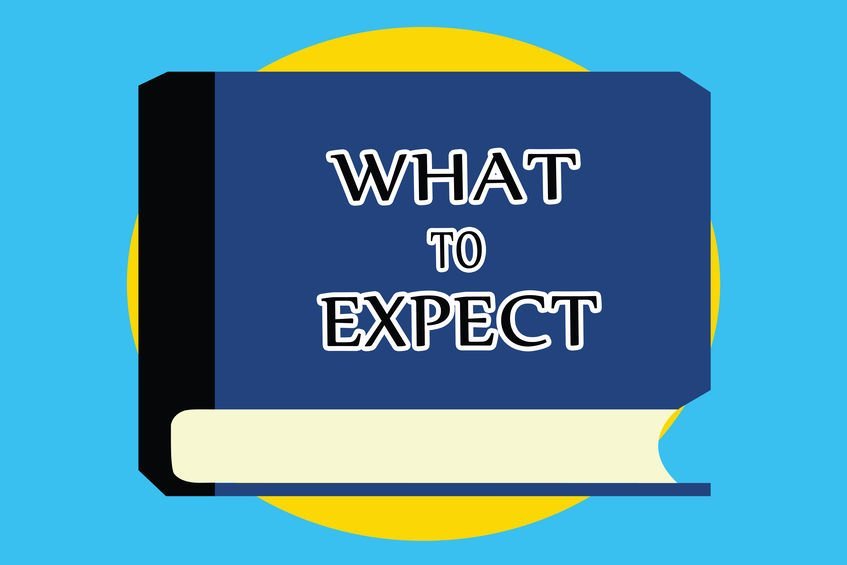
This metaprogram is one of the most important because you need to know who you are working with and what to EXPECT their contribution to your life, a project or whatever, will be. This metaprogram will help you keep expectations in check.
For people who actually get stuff done, there is an important distinction to be made for those who get things done quickly, right or slowly.
I remember when I painted houses. I was the wrong guy to pay attention to micro details. My goal was to get the job done very well but move it along and get on to the next project. My partner was a perfectionist and every detail had to be perfectly completed. This actually dovetailed well with my approach and I respect it very much.
Once you know someone WILL get the job done then you want to know what to expect as far as speed, quality, “price.”
In business we’ve always known that you can have up to TWO of these THREE things: price, high quality, fast service. In other words if you want it tomorrow you can pick your combination of fast, quality or price. But getting all three isn’t going to happen.
As a mentor I’m’ not inexpensive but there are few better and few will be as quick at getting to you and a result as myself. “I want it NOW, I want it BRILLIANT, I want it CHEAP.” Pick TWO and you can get that most of the time.
Remember that all of this assumes the job will get DONE in the first place.
The Perfectionist Program
Perfect (regardless of speed) ………………………………..Law of Diminishing Returns
Details matter Speed (C) Quality (A+) Speed (A+) Quality (B+)
For a number of weeks we’ve been discussing the irrationality of how and why people think, say “yes” or “no.” Logic rarely enters into people’s decision making processes. Cultural influence, genetic programming, beliefs, and values all rate higher in the decision making process than rational thinking.
Your customers and clients buy what they want and not necessarily what they need. That is a fact. If you sell your product only to your client’s apparent needs, then you are losing sales and thousands of dollars per year in income.
Your customer buys all products and services based on the result of awareness, priming, framing, their core desires, values, beliefs, mental imprints, cultural and environmental influences/pressures, opportunity, means and the final interaction of numerous metaprograms. You read about many of these metaprograms in Psychology of Persuasion. I discovered several others over the years and wanted to share a few of those with you today. I’ll define them for you in just a moment. The more importantly, I’ll show you how to use them when you’re talking with important people in business, in life.
Persuasive messages that only include what people need are not as likely to be acted upon as those that focus on building wants and moving the person toward those wants.
Once the person decides they want something they merely need to justify the purchase of the product or service…or idea. Clearly, people are a rationalizing species and not rational.
How we can help them justify the purchase is where understanding and utilizing their metaprograms comes into play. My tag on this is that YOU are like a purchase. People must “buy you” and I developed the phrase “Brand You” about 20 years ago (really) and now of course many have written books and given presentations with that TITLE but I wonder if they really get YOU. Let’s find out
So… what are a few of the other NEW metaprograms?
Metaprograms

Metaprograms are unconscious filters and directions of experience and behavior. (We often alter this definition slightly for the convenience of utilizing similar software like programs that are running in your customer’s head but are as yet uncategorized.) A metaprogram is similar a personality trait like openness or conscientiousness, that a person is unaware of in most communications, at the conscious level. Each personality trait is so powerful that if you could alter it even modestly, it would change the future of your customer (or even yourself!).
Carl Jung discovered metaprograms in the 20th century and called them temperaments. He believed that people were different from each other in fundamental ways. He used terms like “function types” or “personality types” to describe these differences. While noting the differences Jung also agreed that within each person is the same multitude of instincts that drive them that we all have.
But I was interested in a much deeper look into a person’s brain and behavior than a few temperments or personality types.
I wanted a PREDICTABLE way to know future human behavior.
Metaprograms helped fill this desire which would be expanded over more than two decades to include now over 60 laws of persuasion where there were 6 when I was at University!
Here’s an example that has been attacked the last few years by a few psychologists who are simply idiots. This same group has attempted to discredit Stanley Milgram, Philip Zimbardo and others who have given us a profound understanding of human behavior.
The Marshmallow Test is one of those seriously remarkable things that predicts human behavior over time.
(Two sentence version of FIVE DECADES of study) Put a couple of marshmallows in front of a child. Leave the room for a few minutes. If they are still there when you return you probably have a kid with good self discipline. Self discipline predicts success in grades, graduation, income…DECADES after the 3 minute experiment.
This was what I wanted to know more about. And I collected pretty much every piece of information from the dawn of mankind to 2020 and then bring it to the public.
It was then I stumbled upon metaprograms which when we tested them at the school, most didn’t fulfill, but we also honed down tons of behaviors of many different kinds of people into predictable patterns. Some of these patterns fit the definition of the NEW metaprograms.
What are they and what is NEW about new or different metaprograms?
More New Legend Metaprograms
There is a definite quality of overlapping programs within each of us. If you watch the FOX news and then click to CNN news, some of the stories are the same and some are unique to each channel. Metaprograms are similar to this experience. In this article, you will learn some of the “new metaprograms” that are critical to pulling the right strings in the persuasion process. You may feel that there are relationships between two metaprograms and that is a sign that you are becoming consciously aware of the programs that are running your mind, and a good sign of understanding this method of understanding and utilizing personality traits.

Metaprograms are among the deepest filters of perception. These internal sorting patterns unconsciously help us decide what we pay attention to. Metaprograms are, generally speaking, “content free but context dependent.”
Like a software program, the sum of your client’s metaprograms do not actually store information but determine what drives him. His state (of mind) is affected by his metaprograms and they play a significant role in creating his internal representations (his pictures of how he views the world at the conscious and unconscious level).
In order to use a computer program effectively you must understand how use it. In order to communicate with and sell your products and services to your customers in an efficient manner you must understand what metaprograms they use. Because metaprograms are deletion and distortion filters that adjust our generalizations (beliefs), we can predict the states of mind of our customers if we know their metaprograms. If you can predict your client’s internal states, you can easily influence and direct your customer’s decisions and actions.
There are about 50 metaprograms that have been identified as sorting patterns, types, traits and functions for individuals. You will now learn the “new” metaprograms that most affect the sales process. Remember that all metaprograms exist on a continuum and are not either/or representations of personality! As previously noted some people are very extroverted and other people may be just a little extroverted. The behavioral distinctions between someone who is extroverted and someone who is very extroverted can be described as analogical to a good conversationalist compared to someone who never stops talking to listen.
The first of the new metaprograms we want to examine is that of the pain /pleasure sorting pattern. And you begin here because you will be among the first two know that what you learned when you were a kid…is not necessarily true today.
This metaprogram is probably the most important metaprogram in making or losing sales after Conservative vs. Liberal.
Pleasure/Pain Program
A. Experience Pleasure......................................Avoid Pain bright future sick of the way things are feel great stop getting hurt move toward away from make new friends stop being lonely obtain get rid of
Decades of scientific research clearly show that people are more motivated by pain than by pleasure, generally be a factor of two.
But in 2020 we learned that SOME of the contexts where pain and pleasure are relevant to decision, the fact is not 2 or even 2.5:1 as we estimate for 20 years. Sometimes pain is no more powerful than pleasure. For the moment however let’s not underestimate PAIN.
What this means is that you not only will paint a picture of a vivid wonderful future for your customer but you must also find their current wounds (pain) and heal them. In fact, this one Mind Access Point drives over a hundred other Mind Access Points the foundational string is that most people will do almost anything to avoid significant pain.
You might be thinking, “C’mon Kev, gotta be EVERYONE.” And we discovered that wasn’t true. Millions cut themselves. The term we use is “masochists.” Or get tattoos which people know will last a lifetime including the memory of the pain of the process. Pain SOMETIMES is the REASON people do things.
Don’t judge a person when they pursue intentional pain, understand that it is NORMAL for SOME people to walk this path.
IN GENERAL, most people (80% depending on context) are motivated to move toward pleasure and away from pain. Of the two drivers, most people are programmed to move away from pain more than moving toward pleasure. Most.
When your customer was a child he was regularly threatened with pain (a spanking, a slap in the face, loss of privileges) when he behaved in a bad way. This developed very thick and powerful Mind Access Points which many other Mind Access strings are attached to. A smaller number of your customer’s parents regularly motivated them as children by offering rewards for good behavior. Most parents use threats of punishment in order to gain compliance. Your customer continues to want to do anything he can to avoid pain. If that means complying with you, that is what he will do.
Network marketing companies have built empires by pulling the Mind Access Points of those with an entrepreneurial spirit and focusing on the pleasure end of the pain pleasure metaprogram. They help their distributors build dreams and create vivid and lush futures. They move their distributors toward pleasure, as a rule of thumb. Pleasure can MOVE a person.
In contrast, hundreds of the world’s largest corporations have built their fortunes by pulling the Mind Access Points of the populace on the pain side of the pain/pleasure metaprogram. History and scientific research has shown that people are very averse to pain. As mentioned above, most people will do far more to avoid pain than experience pleasure. The experience of pain is the driving force of billions of dollars in the advertising industry. How many of these slogans and commercial themes sound familiar to you?
"Aren't you hungry for Burger King, now?" "Do you suffer from headache pain?" "Do you feel achy?" "Can't sleep at night?"
When you are talking with your client, your job, in part, is to show how your product or service will create great pleasure if they buy from you and also act as a way to avoid pain. If they fail to hire you, you show them how their wound will grow and create pain for them in the future. If they hire you, you will help them heal their wound.
If you have elicited your client’s metaprograms then you can focus on the context specific information you have elicited instead of relying on the general rules we have discussed here. In marketing we must rely on the norms. In the direct sales situation we have a marked advantage of knowing exactly what motivates each specific client.

One effective language pattern that helps the client experience the pain of not working with you, is for you to say a variation of the wound opening, “If you don’t do this now, then won’t things simply get worse?”
The more the customer fears and moves away from pain, the more likely she is to act now. It is part of your job to paint a picture of the consequences of failing to hire you. Experiencing pain must be more than an idea, it must be real to the customer.
To take it to an extreme, “What is the danger of not being helped by Kevin?”
Danger is a BIG word.
But think of the danger of terrorists as you get to the airport.
OK forget it. We haven’t seen them in the U.S. in 20 years. But those were the strategies governments used to keep track of every person that moves beyond his hometown on the planet.
If you fail to sell our customer the services that they need, then they still associate too much pain to change and you have not done your job. No amount of “closing techniques” will get a person to change their point of view or buy a product if they are still unconvinced. You must help the person see the obvious and clear benefits, emotional and logical to accepting your products and services.
Your job is often to paint the status quo as miserable. And for most people on the planet it IS.
Most people have a fear of change. It is pre-programmed within them. Therefore, when painting the status quo, it must hurt to experience it. You must bring out the pain of not changing and make it vivid. Someone who associates no drawbacks or very little pain in the status quo will not accept your proposal. They will say, “no.”
The more someone moves away from pain and experiences fear, the more likely they are to act on a decision, now.
This Exercise Is Worth $100,000, Do It Now.
Use the space below to write down 20 painful futures that your customers could experience if they don’t own your product or use your service. Then write down 20 bright futures that your customers will experience if they do use your product or service. The next time you meet with a client you will have a vast array of futures to offer your customer. It is the quality of the images that you help your customer see that will make you thousands of dollars per year in additional sales.
Here’s a secret: If you don’t do this, you are among the vast majority of other people who have no chance to accomplish anything because we live in a society where effort is undesirable. Fascinating?
Next up is the COST METAPROGRAM Turn the page to find out…
Cost/Convenience Program

B. Cost.......................................................... Convenience
At some point in the sales interview, you will need to determine whether your client is more concerned and with speed / convenience or cost.
Many people will take a quick trip to the local convenience store to pick up a few items even though they cost far more than the grocery store charges, for the simple reason that the convenience store is right on the corner and it only takes a minute to get there. It is convenient. The convenience of the store’s proximity is considered by most to be more important than the increased cost of the goods at the store.
If you are selling financial products then you’ll need to find out whether your client really has the time to closely follow the daily stock reports and make day-to-day decisions about his investments. Would he be happier if you took care of this for him? Is it worth the small cost involved for you to handle his finances in exchange for the incredible burden it lightens within him?
If you sell real estate, does your buyer really want to commute an extra 30 minutes per day to save ten thousand dollars on the price of a house? You need to find out whether the person is more motivated by cost or convenience before the buying process begins.
Change/Status Quo Program
H. Change............................................................Status Quo Different Consistent Evolve Stable Alter Steady Switch Same
Does your client like things to stay the way they are? Does he like to see his business or himself evolve? Grow? Does he like to change? Does he need to keep things status quo?
If you know the buyer’s Change/Status Quo Metaprogram you have a grand opportunity to create security in the status quo or excitement in change. Or as you develop excellent skills you can bring the person to where they need to be THROUGH TIME WITH their metaprograms.
People who like change rarely keep jobs for a long period of time. They tend to get bored easily and they are constantly trying new things. People who like the status quo will tend to stay in the same jobs and do the same things day after day, month after month, year after year.
Accept Readily/Skeptical-Closed Program
I. Accepting.................Cautious........Skeptical..........Closed understand careful beware never unconditional consider can’t always sometimes makes no sense friendly nervous afraid not
You will discover that your customers fall on a continuum from open acceptance to critical skepticism of new ideas, products and services. The program has some similarities to that of Change/Status Quo. However, they are not the same. People who are accepting are willing to listen. Those who are closed are usually closed because of some event(s) that have transpired in his life. Interestingly, people who are closed to opinions often got that way because they were once vulnerable and got hurt or taken advantage of. These are the people that put up “No Soliciting” signs. As every salesperson knows, they are among the easiest people to gain compliance with, if you can get past the dog!
Decision Point: The Right Decision, Every Time

Discover a System of Decision Making That Will Clear the Way to Success
Begins May 24, 2024
If you’ve ever taken one of my Course Intensives, yes, it’s like them!
The Decision Point Course lasts 7 weeks and has more than 20 modules. You set your own schedule – you don’t have to be “in class” at any particular time each day. You get VIP access to a secret members-only section of the KevinHogan.com site and can log in at any time.
Registration today for the course that begins this week allows you to save $700 off the $1,995 price to the public.
If you could point to one word, to one factor, to one element or cause of what happens to you in your life, it is decision.
Maybe you have been experiencing one or more of the following:
Moving is always tough but when there are more than one person’s job or one person going to a school that they love and the possibility of leaving friends behind makes for what many consider an impossible decision. What do YOU decide? How do you decide?
Your investments have done OK but your total income saved for your future is terrible. There are a lot of options you’ve been told about but you really don’t know what to do. What will you decide? How will you decide?
You are a manager at your company and only have enough budget to pursue one product line. You can choose between an almost sure thing with a very modest return or a riskier proposal that could make you a superstar. What do you decide? How do you make the decision?
You’re on your way home for the holidays. You get stuck in bad weather and are put up at a local hotel. In the bar that night a beautiful woman strikes up a conversation with you and she has offered you the key to her room. What will you decide?
A relative lives with you. They take advantage of you but you can’t let them go because you don’t know what will happen to them. What is the right thing to do and will that thing be what you decide? How will you decide?
An elderly relative lives with you. They can’t take care of themselves anymore. You hate the idea of a nursing home or “worse.” You also want “a life.” What will you decide to do?
Your wife is two months pregnant. A test reveals the baby is going to be born with a disease that will require your 24/7 care for the rest of your life. She decides she wants to keep the baby. But you haven’t made your decision. What will you decide to do? How will you make the decision?
Your home has a horrible defect that you can cover easily in the selling process and the defect almost certainly won’t be discovered for years. Revealing it will reduce the price of your home $100,000. What will you decide to do? How will you decide?
You can stay at your present job which you really don’t like that much and live on a predictable but very modest income or you can pursue a venture that has about a 70% chance of success and if it succeeds, you would double your income. What do you decide to do? How do you decide?
You’ve been thinking of getting a divorce but you’re just not sure. There are other fish in the sea but you wonder if you can still compete? Can you do better? What about the kids? What do you DECIDE? How do you decide?
You are involved in a custody battle for your children. One of the kids is misbehaving terribly and you don’t know whether you should spank them or discipline them firmly. The result could easily affect the results of the custody hearing. What do you do? How do you decide?
Two women have taken a liking to you. You date them both for some time. They both begin to talk about moving in and a permanent relationship. One is the kind of person you feel comfortable with and would be easy to love. The other is 10 years younger and is celebrity beautiful. Unfortunately, she knows it and enjoys being the center of attention. What do you decide? How do you decide?
And those are just a few of the decisions that face real people every day. Decisions that people are forced into and have no idea what to do or how to do it.

THIS COURSE shows you how to make ALL of the decisions above.
And it’s important to note, that the right decision easily can be different from person to person. Knowing how to evaluate THAT is crucial to everything you will do…but no one ever does it….
If you haven’t taken a Course Intensive with me: this is not like other online courses you’ve taken. With me, a Course Intensive means you will have instruction in several media forms. Video, audio, and text. There is NO specific time you must meet with me every day, but you will have special VIP email access to me throughout the course. And you will have access to the members’ only discussion group.
About 50% of the people who take my courses collect all the materials and work at their own pace later. The other half work with me and sometimes with other participants when necessary, on projects that are necessary to learn how to make the RIGHT DECISIONS.

My Course Intensives are universally known to be challenging, results-oriented, pragmatic and show you EXACTLY how to get where you want to go.
It’s the Decision Point
Decision making is a function of thinking that almost 90% of people do very poorly. Most people think that if something turns out well, they made a good decision. If something turns out poorly they made a bad decision.
And that conditioning is one of the biggest reasons why people are poor decision makers.
Decision making is first and foremost about MAKING DECISIONS IN THE FIRST PLACE.
Every day, people vacillate on making changes in their lives that they KNOW are absolutely necessary, but they decide to do nothing and hope for the best, only to live a life where nothing ever changes.
This is where we begin.
Elimination of PROCRASTINATION and VACILLATION.
You will learn how to recognize situations where you are about to commit acts of self-sabotage. I’ll show you how to identify it long before it becomes an issue. I’ll show you how to crush self-sabotage so you can make a CHOICE instead of only having the ability to stay with the Status Quo.
This first week’s module alone will be worth the investment in the course.
How would you like to NEVER procrastinate again?
What would happen if you could actually MOVE in the DIRECTION that you want to, even if it is ONLY AWAY FROM WHERE YOU ARE TODAY?!
By the end of week one, you will have daily projects to do for several weeks that will almost literally beat the habits of self-sabotage and procrastination from your life.
Most people don’t know that procrastination is a habit you picked up, but it is NOT your fault.
The same is true of self-sabotage.
I will explain why, where it all started, why it happens to everyone and why it must be eradicated intentionally and with no little effort. By the END of the course, IF YOU FOLLOW the Decision Point Plan, you will have eliminated procrastination and almost all forms of self-sabotage.
I’ll explain in detail why self-sabotage is a little trickier and lurks in EVERYONE’S backyard waiting to strike. I’ll show you how to get rid of it and then prevent it so you never have to deal with it in the future.

And that is only week one! How we doin’ so far?!
Decision IS Destiny
You make decisions all the time. Generally speaking, the more decisions a person makes, the more successful they are.
The better a person is at making decisions, the more successful they are.
When you move from your old home to the home you are in now; maybe you moved because you wanted a bigger house, or to put the kids in a better school district. Maybe it was just closer to where your job is…more convenient.
And of course, in the case of uprooting and moving your family, you’re talking about a lot of variables, a lot of things to consider. You’re going to find out how to make the right decision in which house to buy and where to move.
What about leaving your job for some other opportunity?
FEAR enters the picture quite clearly and because the future is seemingly unpredictable, you feel frozen or stuck as to what to do, so you immediately default to stay in your same job. But there is a way to make this decision much easier. And you’ll be pleasantly surprised when you do….
But there are also the smaller decisions of life.
- Which movie to go see…
- Which show to watch on TV….
- What to make for dinner…
- Whether to go to the game or stay home….
- Whether to take a vacation with or without the kids…
- Whether to wear blue or black…
There is a simple method that takes little thinking at all to make these day to day decisions.
And then there are decisions that you make that influence other people’s lives like taking a new job, going into business for yourself, moving to a new area, having a surgery that has risks involved….
How do you know what to do? Don’t worry, most people haven’t got a clue as to how to make the right decision every time, and there is a right decision to make.

Then there are Destiny Decisions…those decisions that you make that will literally determine where you are going to be in three years or five years.
These are REALLY IMPORTANT decisions. Every day I see people screwing them up as if they are no big deal.
You’ll find out a methodical system that might take a very short amount of time or significantly longer, depending on circumstances. Nevertheless, you will find out exactly what to do every time.
Obviously, there are plenty of Black Swan’s (unexpected random events like hurricanes and terrorism) out there to get in the way of what you want in life, but nothing you can control impacts your life more than a decision).
Write that down.
Put it on the refrigerator.
That alone is worth $10,000, yes?
Nothing you can control impacts your life more than a decision.
How would life be different if you knew you were going to make the right decision, every time?
(Every time?!)
Did you know that in life, there is almost always the best decision?
What would happen if you had the method for decision making?
What would it be worth to have a simple systematic approach to decision making where the guidelines are from your head and heart?
Most people are paralyzed with uncertainty about whether they should:
- Ask the girl to marry them.
- Make a purchase.
- Move from one place to another…
- Quit their job…
- Decide between committing one person or another.
- Start a business…
- Ask the girl to go out with them…
- Send the letter or not…
- Decide between hiring one person or another.
- Get a divorce…
- Send your kids to public or private school…
- Choose from a new car, a used car, or no car…
- Go back to school to get more education…
- Fire the person or not.
- Invest in stocks, bonds, real estate and not screw up.
- Accurately plan for their future in all areas.
Why Do People Make Bad Decisions?
And…they make bad decisions because…we all have about 8-10 areas of failure in our brain….similar experiences where you make the wrong decisions over and over again.
(Like marrying the same guy five times, dating jerks, working for idiots, saying the wrong thing at the worst time, etc. Sound familiar?)
We’ll repair all of that. (If we don’t, life will be the same tomorrow as it has been in the past….)
Did you know there is a proven way to make the right decision in each of the above choices?
Now STOP.
For the sake of discussion, let’s assume that is correct. There IS a method you can use to make the RIGHT decision just about every time.
It doesn’t take a genius to think, “I decide to make more money,” “lose weight,” “get a better job,” “get married to perfect person x”.
KEY: Learning the process of making the right decision involves making that decision STICK, be UNYIELDING and barring a Black Swan, guaranteeing you will follow through.
Over the last 15 years, we’ve been fortunate to have studied the raw information about how to make laser beam accurate decisions. Complex software programs have shown scientists how to simplify the decision making process using some mostly simple (sorry, it’s not ALL instantly easy!) rules.
And now, you don’t need the software or the computer anymore…
And, by the way, in the last 15 years, there has been an incredible amount of research done about decision making that teaches and uses VERY FAULTY processes, that can’t and don’t work.
KEY: You’ll experience FIRST HAND, how what seems to be an obvious decision, is almost always the wrong one….the costly one…(often the disaster one….)
If you follow that teacher’s advice, you’ll flat out screw up.
You’ll end up with next to nothing and headaches and heartaches to boot.
Why?
People get emotional.

People are lazy.
They don’t do the research.
They don’t test.
Why should they?
They get paid the same no matter what and when YOU screw up, they just say, “you did it wrong.”
Play along for just a moment.
Can I ask you a question?
Have you ever read that it’s been proven that 93% of all communication is body language?
Of course, lots of times. Everyone has read that.
And of course, it’s not true.
(It’s not even close to accurate.)
How could that be, it’s common knowledge…isn’t it?
There was one study done by a brilliant communication researcher 35 years ago that evaluated people saying one word to another, with the other person only being able to see the person from the neck UP. (that leaves about 90% of the body out of the study.) In this one specific instance, Dr. Mehrabian found that about 93% of the communication sent was at a nonverbal level. Obviously when people communicate with more than one word and people can see below the neck, all kinds of factors change the percentages.
Problem is people read something in a book written by Goofball X and they believe what she writes because she says it’s “scientific.”
People look at their lives and think, “I did everything I was told…”
Yep and look at that life. It didn’t work.
The guru didn’t do the research. They went with the party line and taught that.
I don’t care about the party line because I don’t like the people at the party.
Remember when Benjamin Franklin did his famous experiment about testing each of the virtues (temperance and so forth) for a month so he could eventually become adept at all of them? I’ve heard most motivational speakers talk or write about this. I’d name them, but it would take an entire page…
Anyway…You remember… but he gave up the idea after the first week …he never did the experiment. He wrote early in his biography that he was going to do the project and then soon after decided not to. Basically, he said it was impossible to do such a thing.
I’ve never heard ANYONE get that right, either.
But THEY TEACH YOU TO DO IT…
And because you trust them YOU TRY IT and FAIL.
Franklin’s personal challenge didn’t work for all kinds of reasons I’ll show you later.
Question: Why did you believe he actually did the project?
Only one reason: …because someone you trusted or believed, an author, a teacher….told you that it was true.
Want a quick way to filter a crummy guru out?
If they tell you that story, they didn’t get very far in Franklin’s biography. If they tell you that, they’d tell you anything.
By the way…what did Franklin do instead?!
I’ll show you that at Decision Point, too.
The point is that MOST of the stuff people tell you to do…. that is “scientific,” that is based on laws of the universe or proven techniques is nothing more than their imagination having run wild.
…and following their advice will get you the same ultimate destination, every time…
Back to Start. (If you don’t go into foreclosure first.)
So why don’t the vast majority of people make good decisions?

Why are people AFRAID to make decisions at all?
They’ve been given crummy information and worse methods for how to choose and what to do.
It’s that simple.
(OK, there are eight other core reasons people make crummy decisions every day, but to pick on your neighbor here is so not cool…)
And what does the Power of Decision Point give you in life?
- Choice
- Personal freedom
- No limits
- The Ability to Succeed When Most Others Fail
- The Ability to Make Big Changes in Life with Ease and…
- Wealth if You Want It
- A LOT Better Life If You USE The Power of Decision
- Success when you use The Power of Decision.
You’re going to learn it ALL in this 7 Week E-Course.
If you’ve been in an E-Course with me, you know that although they are always convenient, they are also densely packed with practical, real life application as the end result. That is the same here. Everything you learn will be immediately applied to a crucial part of your life because there is a LOT going on in your life right now and a LOT of it has to change but you don’t know WHAT.
Each week you’ll receive a number of emails or documents from me. You’ll have homework assignments that are all real-life based…your life. You’ll be given audio’s to listen to or video to watch. You will once again, find out what “over delivery” means!
You’re going to discover:
- How People Decide
- Why Most People Make Almost All Bad Decisions
- How to KNOW What to do…
- The Four Factors of Luck and How to Tilt the “Luck Factor” in YOUR Favor.
- How to Beat the Black Swan when Bad Luck Strikes…
- All of the Successful Strategies for Decision Including Decision Point: MY PERSONAL SYSTEM
Do you sell something for a living?
[Pay attention: I’m going to show you how to analyze how your client WILL DECIDE on buying your product or service…and I’ll show you WHAT is going to happen next…think that might be worth $10,000?!]
I’ve never given the system for DECISION POINT to anyone.
I’m not going to write about it in Coffee….ever.
But the time is now to experience a truly transformational experience in an exciting and unique E-course.
I PROMISE YOU:
No one else is going to ever show you this information. You’ll never experience these experiences with anyone else. You can’t find anything remotely similar “out there.”
So essentially, you’re stuck spending seven weeks with me. As with all of my Course Intensives, I am your PERSONAL COACH and you don’t have to be at any specific place at any specific time. The program is delivered via audio, video, and text.
So what’s going to happen in these seven fascinating weeks?
I’ll personally show you the problems you face when you make decisions.
You’ll find out the impact of other people on your decision.
I’ll show you how to minimize the NEGATIVE impact of other people on your decisions, including the people you might love or work with every day.
You won’t regret your decisions anymore.

You’ll understand how to MINIMIZE RISK and MAXIMIZE RETURN on both business and personal decisions.
I’ll show you EXACTLY what to do when the RIGHT decision you determine, FEELS completely wrong.
Finding out how your beliefs, faith, values and lifestyle factor into your decisions matters a lot to you. No one else shows you how to be true to yourself and others around you while you decide for your Self or for many.
Almost forgot…
At the end of the course, you will have one cool, big Coffee Table-Sized Manual that you will be able to refer to forever.
Your tuition: $1,995 but save $700 with this last minute chance to get in today!
A couple things before you apply!
- I reserve the right to reject any application for any reason.
- There may be a few group projects that are necessary for making decisions where two people are involved, instead of just you (as in a marriage, with kids, or at work). If you are unwilling to e-mail one of your fellow participants during these two projects do not apply.
- Everything is yours to keep, but you may not share or give away any of this information to anyone.
- If you’re still here with me, then I look forward to seeing your application!
$1,995 but save $700 today by getting your application in under the wire.!


